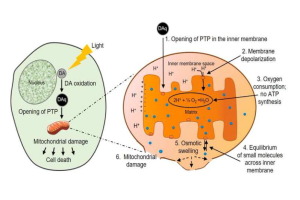Neuroscience ( IF 3.3 ) Pub Date : 2020-03-04 , DOI: 10.1016/j.neuroscience.2020.02.047 Irene Fasciani 1 , Francesco Petragnano 1 , Gabriella Aloisi 1 , Francesco Marampon 2 , Mario Rossi 3 , Maria Francesca Coppolino 1 , Rodolfo Rossi 4 , Biancamaria Longoni 5 , Marco Scarselli 5 , Roberto Maggio 1

|
Growing awareness of adverse impacts of artificial light on human health has led to recognize light pollution as a significant global environmental issue. Despite, a large number of studies in rodent and monkey models of Parkinson's disease have reported that near infrared light has neuroprotective effects on dopaminergic neurons, recent findings have shown that prolonged exposure of rodents and birds to fluorescent artificial light results in an increase of neuromelanin granules in substantia nigra and loss of dopaminergic neurons. The observed detrimental effect seems to be dependent on a direct effect of light on the substantia nigra rather than a secondary effect of the alterations of circadian rhythms. Moreover, inferences from animal models to human studies have shown a positive correlation between the prevalence of Parkinson's disease and light pollution. The present article discusses experimental evidence supporting a potentially deleterious impact of light on dopaminergic neurons and highlights the mechanisms whereby light might damage neuronal tissue. Moreover, it analyses epidemiological evidence that suggests light pollution to be an environmental risk factor for Parkinson’s disease.
中文翻译:

对多巴胺神经元的新威胁:人造光的缺点。
人们越来越认识到人造光对人类健康的不利影响,已经认识到光污染是一个重大的全球环境问题。尽管在帕金森氏病的啮齿动物和猴子模型中进行了大量研究,但都报告说近红外光对多巴胺能神经元具有神经保护作用,最近的发现表明,啮齿动物和鸟类长时间暴露于荧光人工光会导致神经黑色素颗粒的增加在黑质中和多巴胺能神经元的丧失。观察到的有害作用似乎取决于光对黑质的直接作用而不是昼夜节律改变的次要影响。此外,从动物模型到人体研究的推论表明,帕金森氏病的患病率与光污染之间存在正相关关系。本文讨论了支持光对多巴胺能神经元造成潜在有害影响的实验证据,并强调了光可能损害神经元组织的机制。此外,它分析了流行病学证据,表明光污染是帕金森氏病的环境危险因素。

























 京公网安备 11010802027423号
京公网安备 11010802027423号